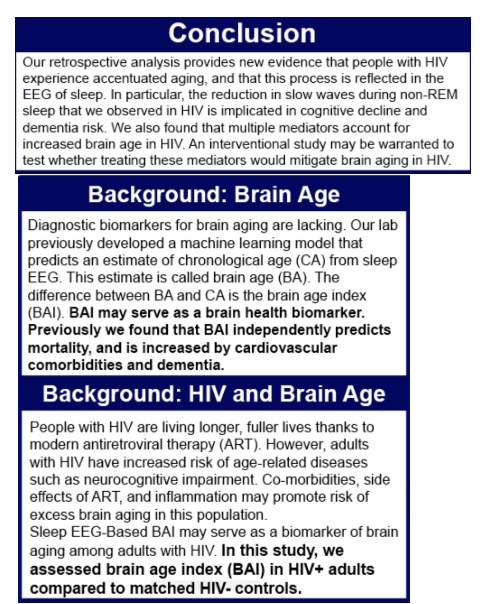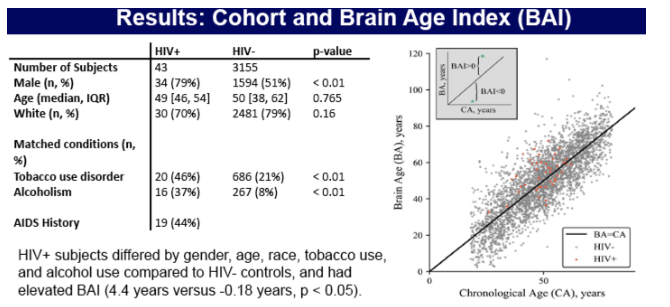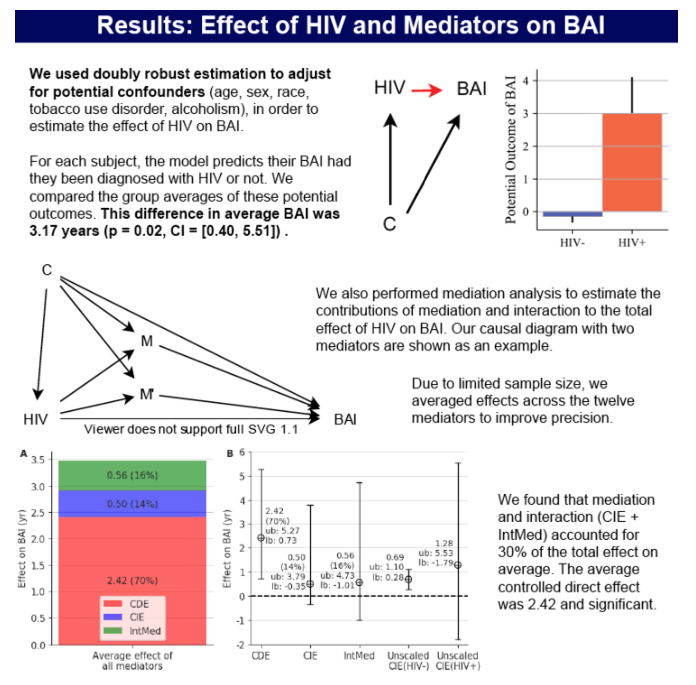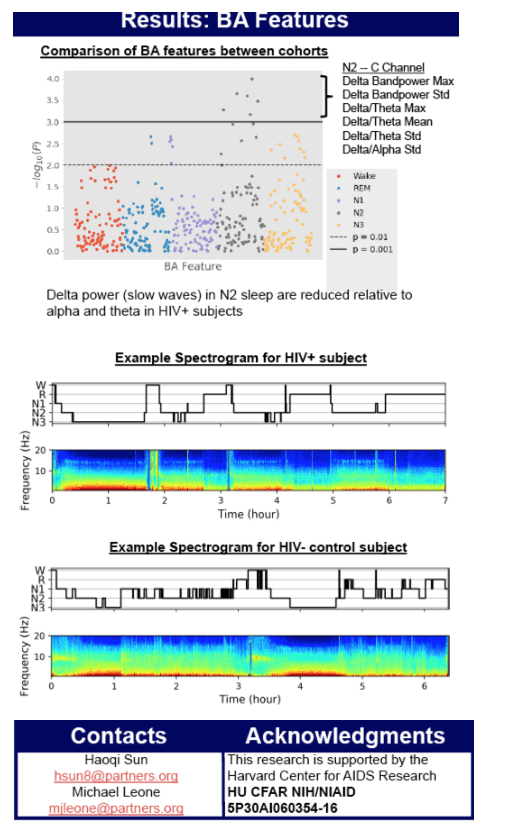 |
 |
 |
| |
BRAIN AGE BASED ON SLEEP
ENCEPHALOGRAPHY IS ELEVATED IN HIV+ ADULTS ON ART
|
| |
| |
CROI 2020
Reported by Jules Levin
Michael Leone1, Haoqi Sun1, Christine Boutros1, Robert Thomas2, Gregory K. Robbins1, Shibani S. Mukerji1, M. Brandon Westover1
1Massachusetts General Hospital, Boston, MA, USA,2Beth Israel Deaconess Medical Center, Boston, MA, USA
Abstract Body:
Co-morbidities and increased inflammation associated with HIV have raised concern for excess brain aging, yet diagnostic biomarkers for brain aging are lacking. Our lab developed a machine learning model that estimates age from sleep EEG (brain age, BA), which reliably predicts chronological age (CA) in healthy adults. The difference between BA and CA, termed the brain age index (BAI), independently predicts mortality, and is increased by cardiovascular comorbidities and dementia. Here, we assessed BAI in HIV+ compared to matched HIV- adults.
Sleep EEGs from 43 HIV+ adults on ART were gathered and matched to controls (HIV-, n=284) by age, gender, race, alcoholism, smoking and substance use history. We compared BAI between groups and used additional causal interference methods to ensure robustness. Individual EEG features that underlie BA prediction were also compared. Finally, we performed a sub-analysis of BAI between HIV+ with or without a history of AIDS.
After matching, mean CA of HIV+ vs HIV- adults were 49 and 48 years, respectively (n.s.). The mean HIV+ BAI was 3.04 years higher than HIV- (4.4 vs 1.4 yr; p=0.048). We found consistent and significant results with alternative causal inference methods. Several EEG features predictive of BA were different in the HIV+ and HIV- cohorts. Most notably, non-REM stage 2 sleep (N2) delta power (1-4Hz) was decreased in HIV+ vs. HIV- adults, while theta (4-8Hz) and alpha (8-12Hz) power were increased. Those with AIDS (n=19, BAI=4.40) did not have significantly different BAI than HIV+ without AIDS (n=23, BAI=5.22). HIV+ subjects had higher rates of insomnia (56% vs 29%, p<0.001), obstructive apnea (47% vs 30%, p=0.03), depression (49% vs 23%, p<0.001), and bipolar disorder (19% vs 4%, p<0.001).
HIV+ individuals on ART have excess brain age compared to matched controls using a sleep EEG-based model of brain aging. This excess brain age is partially due to the relative reduction in delta power during N2, suggesting decreased sleep depth in HIV+ subjects. These results suggest sleep EEG could be a valuable brain aging biomarker for the HIV population.





|
| |
|
 |
 |
|
|